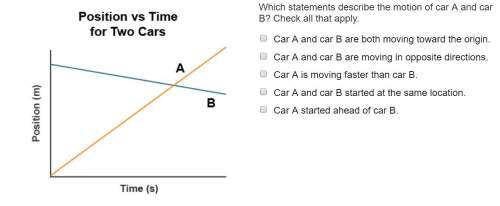
Physics, 18.11.2019 19:31 loganhowington26
You’ve been given the challenge of balancing a uniform, rigid meter-stick with mass m = 75 g on a pivot. stacked on the 0-cm end of the meter stick are n identical coins, each with mass m = 2.7 g, so that the center of mass of the coins is directly over the end of the meter stick. the pivot point will be measured from the 0-cm end of the meter stick. (a) determine the distance da in cm if there is na 1 coin on the end of the meter stick, and the system is to remain in static equilibrium. grade summary deductions potential 100% sino cos0 tano 7 8 9 home submissions attempts remaining: 5 cotano asino acoso 4 5 6 6% per attempt 1 2 3 atan0 acotano sinh0 detailed view cosh00 tanh0 cotanh0 degrees radians backspace submit hint i give up! hints: 0% deduction per hint. hints remaining: 4 feedback: 0% deduction per feedback. a 25% part b) determine the distance db (i cm) if there are no 36 coins on the end of the meter in a 25% part (c) how many coins would you have to stack at the 0-cm mark if the distance d 10.0 cm? a 25% part (d) is it possible to stack enough coins to keep it in equilibrium if d 30? all content 2015 expert ta, llc

Answers: 2


Another question on Physics

Physics, 21.06.2019 23:30
A175 g lump of molten lead at its melting point (327 c) is placed into 55.0 g of water at 20.0 c. the specific heat of lead is 130.j/kg c and the hf of lead is 20,400 j/kg. when the lead and the water have reached equilibrium, what is the temperature of the mixture?
Answers: 3

Physics, 22.06.2019 08:00
Aheat engine running backward is called a refrigerator if its purpose is to extract heat from a cold reservoir. the same engine running backward is called a heat pump if its purpose is to exhaust warm air into the hot reservoir. heat pumps are widely used for home heating. you can think of a heat pump as a refrigerator that is cooling the already cold outdoors and, with its exhaust heat qh, warming the indoors. perhaps this seems a little silly, but consider the following. electricity can be directly used to heat a home by passing an electric current through a heating coil. this is a direct, 100% conversion of work to heat. that is, 19.0 \rm kw of electric power (generated by doing work at the rate 19.0 kj/s at the power plant) produces heat energy inside the home at a rate of 19.0 kj/s. suppose that the neighbor's home has a heat pump with a coefficient of performance of 4.00, a realistic value. note: with a refrigerator, "what you get" is heat removed. but with a heat pump, "what you get" is heat delivered. so the coefficient of performance of a heat pump is k=qh/win. an average price for electricity is about 40 mj per dollar. a furnace or heat pump will run typically 200 hours per month during the winter. what does one month's heating cost in the home with a 16.0 kw electric heater? what does one month's heating cost in the home of a neighbor who uses a heat pump to provide the same amount of heating?
Answers: 2

Physics, 22.06.2019 11:30
1. a camcorder has a power rating of 19 watts. if the output voltage from its battery is 7 volts, what current does it use?answer units 2. a 1.5m wire carries a 6 a current when a potential difference of 57 v is applied. what is the resistance of the wire? yourunits 3. a clothes dryer uses about 2 amps of current from a 240 volt line. how much power does it use? yourunits 4.
Answers: 1

Physics, 22.06.2019 16:00
The process of predicting values that extend beyond the range of data points is called absolute value extrapolation interpolation prediction for any given: )
Answers: 2
You know the right answer?
You’ve been given the challenge of balancing a uniform, rigid meter-stick with mass m = 75 g on a pi...
Questions

Mathematics, 29.06.2020 03:01

Law, 29.06.2020 03:01


Chemistry, 29.06.2020 03:01


History, 29.06.2020 03:01


Mathematics, 29.06.2020 03:01

Mathematics, 29.06.2020 03:01

Mathematics, 29.06.2020 03:01

Mathematics, 29.06.2020 03:01



Mathematics, 29.06.2020 03:01



Mathematics, 29.06.2020 03:01






